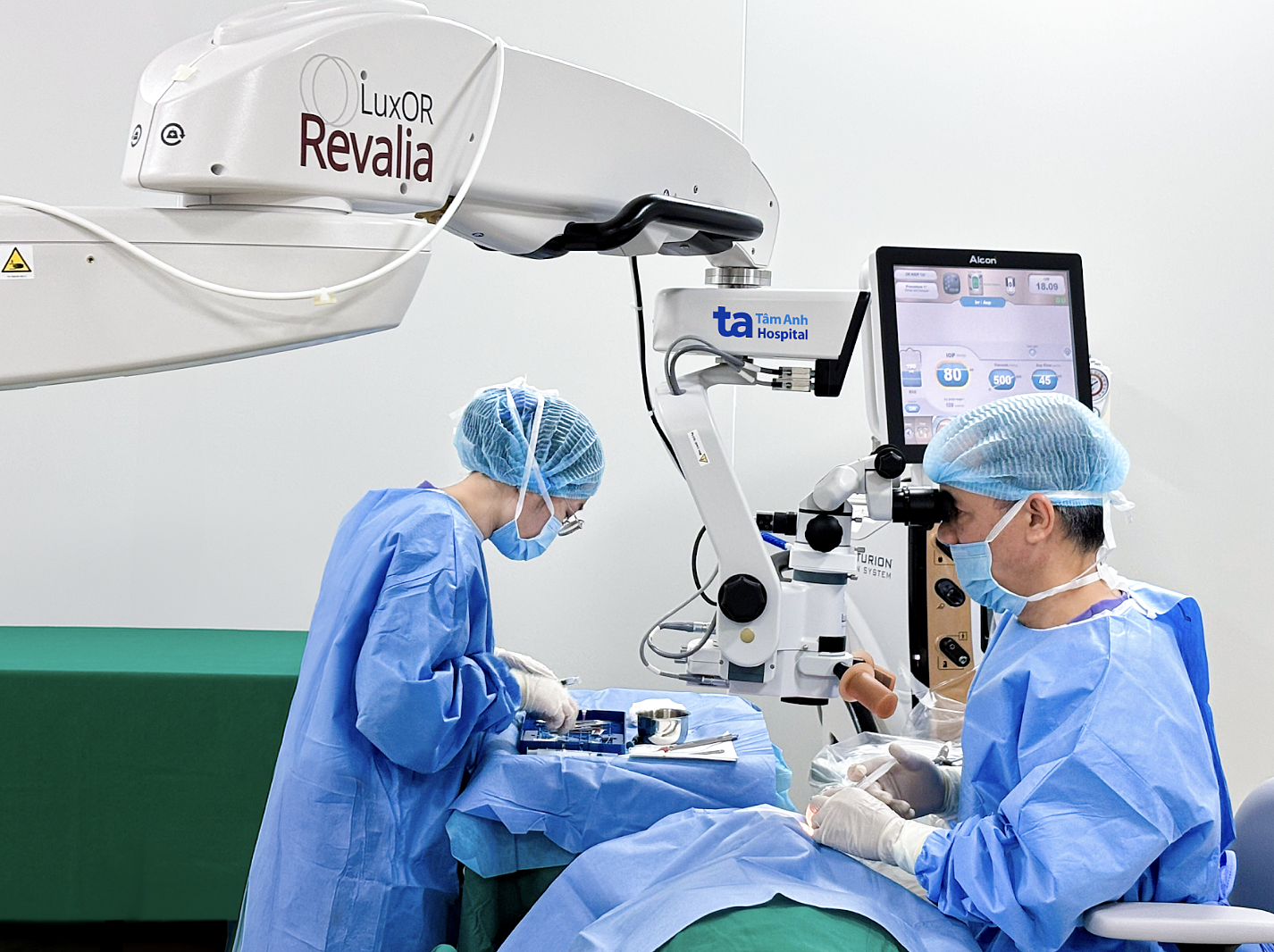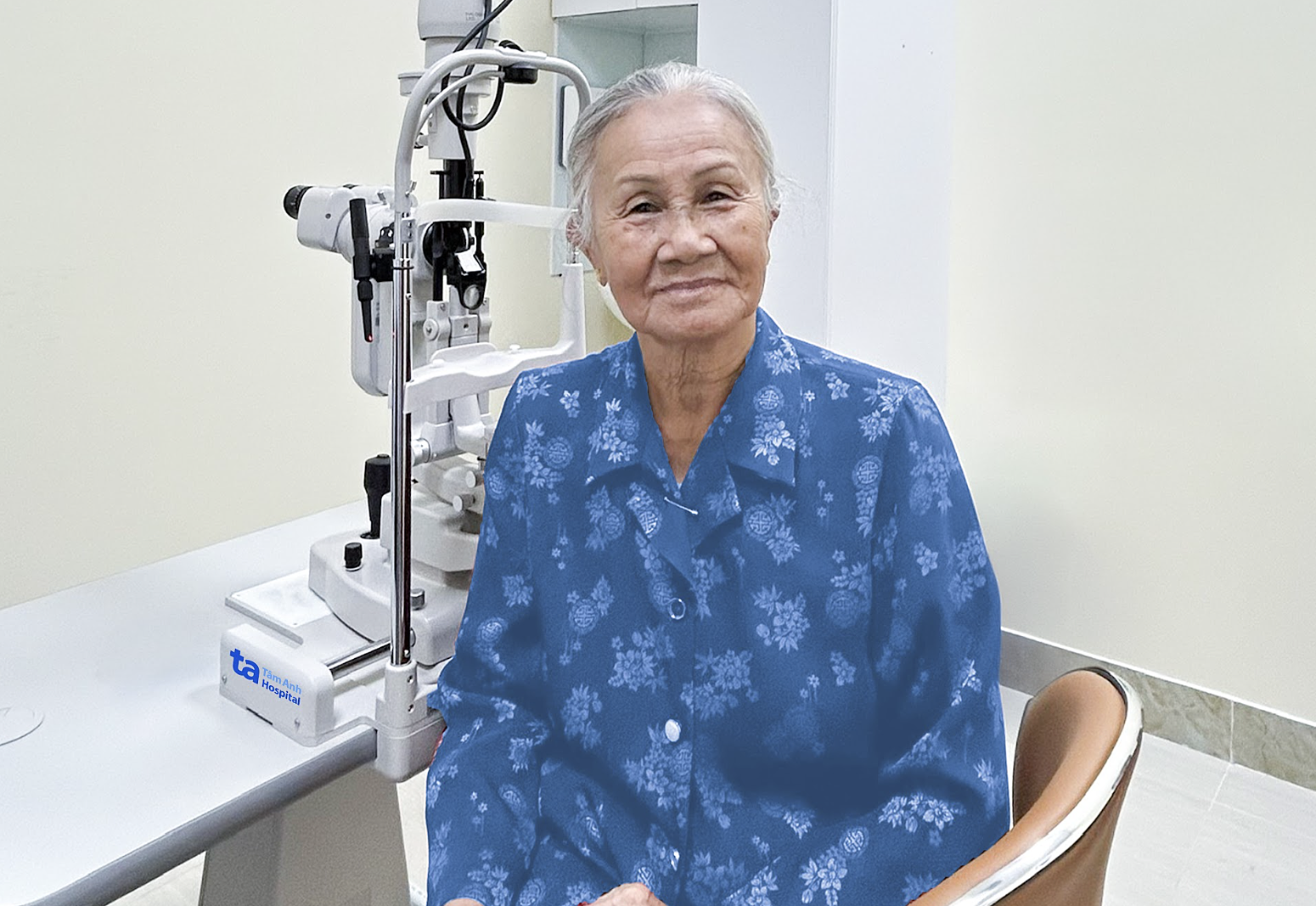Dien's left eye had been gradually clouding over the past six months, making her vision blurry. She sought treatment at the High-Tech Eye Center of Tam Anh General Hospital. Doctor Tang Ngoc Anh, Deputy Head of the Ophthalmology Department, diagnosed her with age-related cataracts and 4 diopters of astigmatism at an axis of approximately 170 degrees. This condition distorted her vision and significantly reduced its quality. Her left eye's visual acuity had decreased to 2/10.
 |
A doctor performs cataract surgery on Dien's left eye. Photo: Hospital provided |
Professor Nguyen Xuan Hiep, Director of the High-Tech Eye Center, performed the cataract surgery on Dien's left eye. He used phacoemulsification (using ultrasound waves to break up the cataract) and implanted a toric intraocular lens to correct the astigmatism.
 |
Dien at a follow-up appointment after cataract surgery. Photo: Hospital provided |
After the surgery, the astigmatism in Dien's left eye was reduced to a very low 0.13 diopters, and her visual acuity improved to 8/10, eliminating the need for glasses.
According to Doctor Ngoc Anh, elderly patients, especially those with high astigmatism like Dien, should visit hospitals or eye clinics for thorough evaluations and optimal treatment plans.
Cataracts occur when the eye's lens becomes cloudy, impairing vision. The condition is primarily caused by natural aging and is common in people over 60. Currently, the only effective treatment is cataract surgery with an artificial lens implant, which improves vision in up to 97% of cases, according to Doctor Ngoc Anh.
When both eyes have cataracts, patients typically undergo surgery on each eye several days to weeks apart to allow the first eye to heal and reduce the risk of complications. However, some individuals may experience severe cataracts in only one eye, with slower progression in the other, leading to a longer interval between surgeries. In Dien's case, the 15-year gap between surgeries was due to the uneven progression of cataracts in her eyes. The slower progression in her left eye meant surgery wasn't necessary until recently.
Song Lam
| Readers can submit questions about eye diseases here for doctors to answer. |












